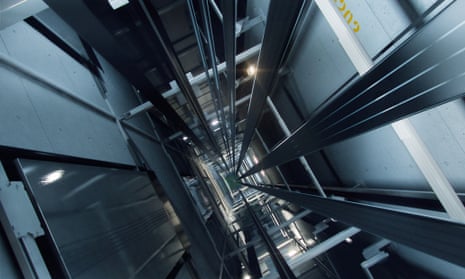We Maintain Lifts to the Greatest Requirements: Reliable Service for All Lift Kind
We Maintain Lifts to the Greatest Requirements: Reliable Service for All Lift Kind
Blog Article
Diving Into the World of Elevators: Common Issues Dealt With by Various Lift Systems
As we navigate through the upright transportation systems of modern-day structures, elevators stand out as a crucial element of our daily lives. From hydraulic lifts to traction systems and machine-room-less styles, each lift type comes with its set of typical concerns.
Hydraulic Elevators
Hydraulic elevators, commonly chosen for low-rise structures, use fluid stress to manage the motion of the elevator cars and truck (lift repair companies). This system involves a hydraulic pump pressing oil right into a cyndrical tube, causing the lift to relocate the preferred instructions. While hydraulic lifts are known for their smooth and quiet procedure, they do come with their own collection of common problems
One widespread trouble with hydraulic lifts is oil leak. The seals in the hydraulic system can put on out gradually, resulting in oil infiltration. This not only creates a mess but can also impact the lift's efficiency if left unaddressed. In addition, concerns with the control system, such as faulty valves or a malfunctioning pump, can cause disturbances in the lift's movement.
Routine upkeep and punctual repair work are necessary to guarantee the smooth performance of hydraulic lifts. By addressing these typical problems proactively, building proprietors can minimize downtime and make certain the safety and security and performance of their vertical transport system.
Grip Elevators
When taking into consideration vertical transport systems in buildings, one more usual kind apart from hydraulic lifts is the grip elevator. Grip elevators operate using a system of ropes and weights that relocate the elevator car by grasping onto the hoist ropes. This device enables smoother and much faster vertical transportation contrasted to hydraulic systems.
Among the usual problems dealt with by traction elevators is rope wear. The consistent activity of the ropes within the traction system can cause tear and put on with time, possibly triggering the lift to breakdown or come to be hazardous for usage. Routine inspections and upkeep of the ropes are important to make sure the elevator's proper performance and safety.
Another problem that grip lifts might experience is connected to the control system. Troubles with the control system can cause issues such as irregular motion, delays in reaction times, and even total shutdowns. Routine screening and maintenance of the control system are crucial to avoid such concerns and guarantee the lift's reliability.
Machine-Room-Less (MRL) Lifts

Among the key elements of MRL lifts is the portable gearless grip machine that is installed within the hoistway. This machine successfully drives the elevator automobile without the demand for cumbersome equipment discovered in conventional grip elevators. Furthermore, MRL elevators generally make use of a counterweight system to balance the automobile, further improving their energy effectiveness.
In spite of their advantages, MRL elevators may encounter challenges connected to repair and maintenance because of the confined space for tools installation. Ease of access for servicing components within the shaft can be restricted, requiring specialized training for service technicians. Correct upkeep routines and regular evaluations are crucial to ensure the ongoing smooth procedure of MRL disabled platform lifts prices uk lifts.
Overloading and Weight Restriction Issues
Are elevators outfitted to handle excess weight loads effectively and safely? Straining and weight restriction problems are crucial problems in lift operations. Elevator makers design raises with details weight capacities to ensure passenger safety and security and equipment durability. Going beyond these weight restrictions can bring about numerous issues, consisting of mechanical failures, delays, and safety hazards.
When lifts are overwhelmed, it puts extreme stress on the electric motor, cables, and various other components, potentially triggering malfunctions or failures. If they identify excess weight, safety and security systems such as sensing units and overload sensors are in place to avoid elevators from relocating. Additionally, surpassing weight restrictions can bring about enhanced power usage and wear and tear on the elevator system.
To alleviate overloading issues, developing managers should plainly display weight limits in elevators and enlighten passengers on the importance of sticking to these restrictions - lift repair companies. Routine maintenance checks by qualified professionals can additionally assist guarantee that elevators are operating within safe weight parameters. By dealing with overloading and weight restriction problems proactively, building owners can improve elevator safety and security and efficiency
Electric System Failures
Surpassing weight limits in elevators can not only bring about mechanical concerns but additionally possibly add to electric system failures within the lift facilities. Electrical system failings are an essential issue in lift procedure, as they can cause unexpected closures, malfunctions, and even safety and security risks. One typical electrical concern is the getting too hot of components because of too much we maintain lifts current flow created by overwhelming the lift beyond its capacity. This can bring about damage to the wiring, control, or electric motor systems, causing pricey repair work and downtime.
Regular maintenance and assessments are vital to determine and address potential electrical problems without lift repair near me delay, making certain the efficient and risk-free procedure of elevator systems. By sticking to weight restrictions and performing regular electrical system checks, building proprietors can mitigate the risk of electrical failings in lifts.
Verdict

Hydraulic lifts, often favored for low-rise buildings, utilize fluid stress to control the motion of the lift auto.When considering vertical transportation systems in buildings, an additional usual kind apart from hydraulic lifts is the traction lift. Grip elevators operate utilizing a system of ropes and weights that move the lift automobile by grasping onto the hoist ropes. Unlike traditional lifts that need a separate device area to house the equipment, MRL elevators incorporate many of the parts within the shaft, getting rid of the demand for a committed equipment space.In verdict, lifts deal with common concerns such as hydraulic breakdowns, traction system failings, and electric system troubles.
Report this page